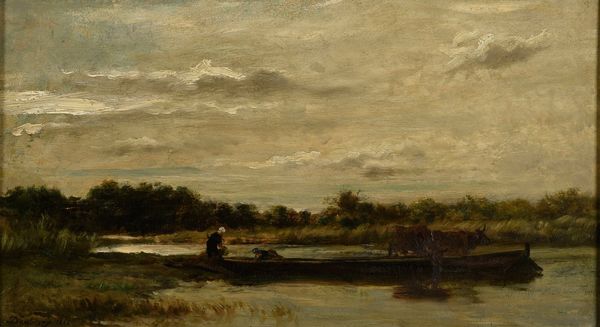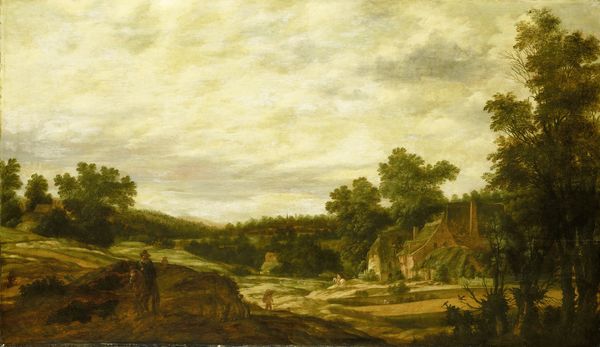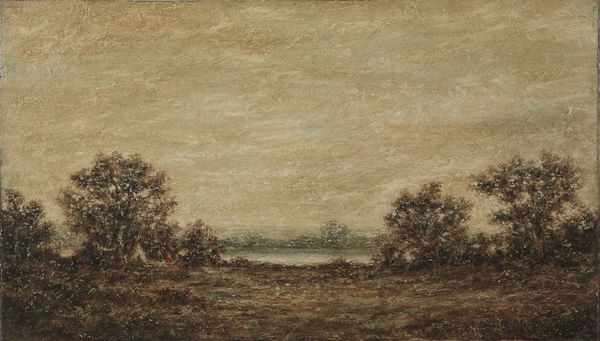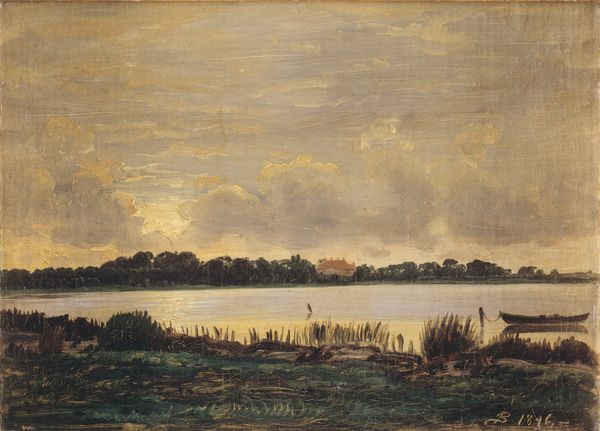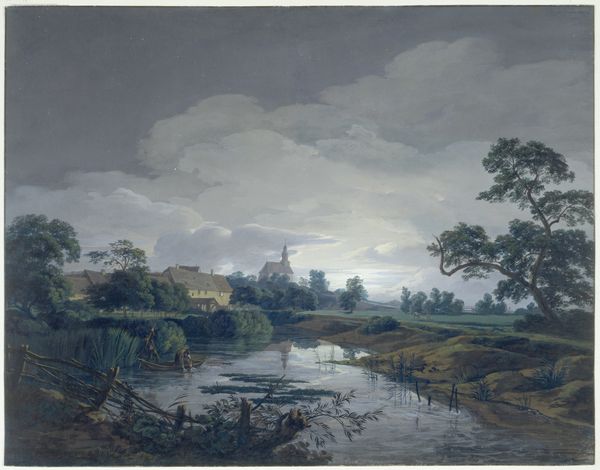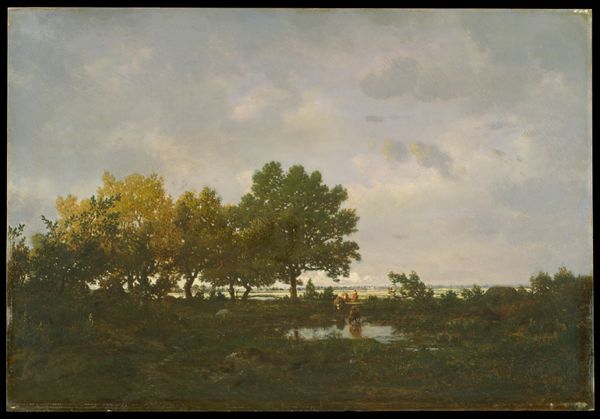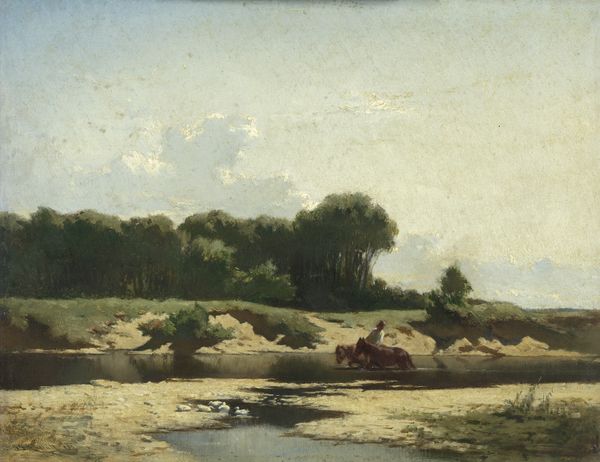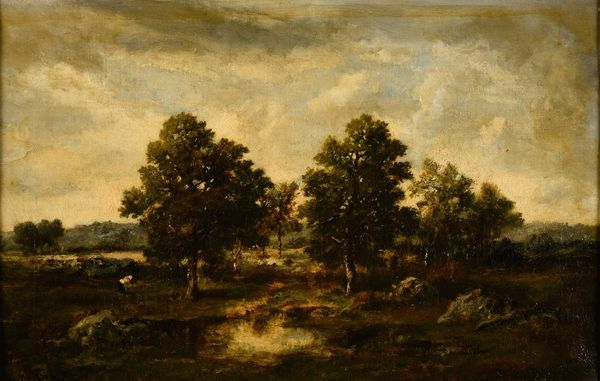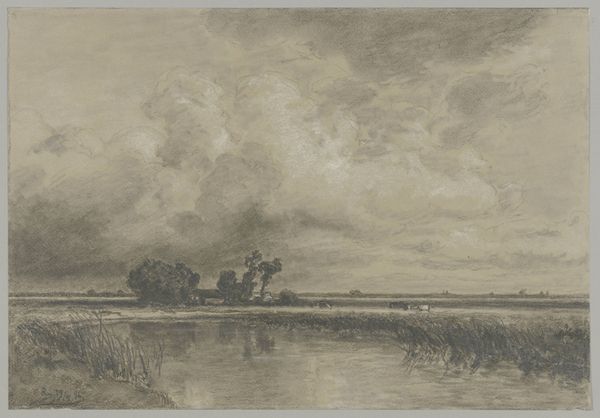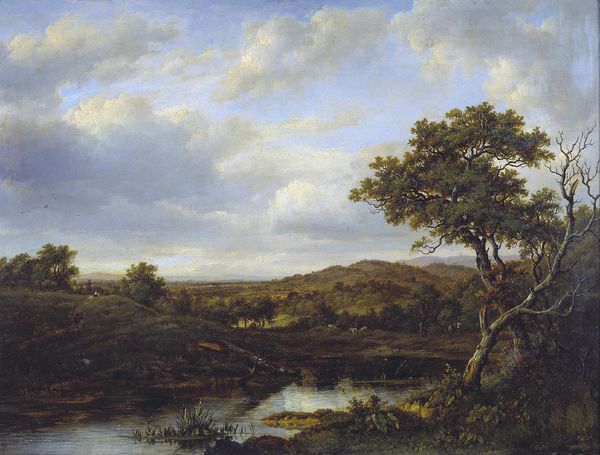
painting, oil-paint, oil
#
baroque
#
dutch-golden-age
#
painting
#
oil-paint
#
oil
#
landscape
#
perspective
#
figuration
#
oil painting
#
14_17th-century
#
realism
Dimensions: 71.6 x 116.4 x min. 1.2 cm
Copyright: Public Domain
Curator: Philips Koninck’s "Dutch Landscape," likely created between 1660 and 1670, presents us with a broad vista executed in oil on canvas. It is part of the collection at the Städel Museum. Editor: Immediately, the light strikes me—the low horizon and expansive sky feel incredibly raw, almost foreboding. What did the process of painting it look like? Curator: Considering the historical context of the Dutch Golden Age, we might view the work as an assertion of Dutch identity, a portrayal of the land literally and figuratively providing for its people through trade and agriculture. Editor: Absolutely, and you can almost feel the artist’s hand in rendering those meticulous details—the tiny figures, the animals… Look at the labor required to represent that expansive land so precisely. Curator: The laborers in the landscape and its vastness makes me think of gender and the division of labor: the male shepherd stands to the right, overseeing his flock. In thinking about material consumption, one ponders who commissioned this landscape and where was it to be hung. Did the patron feel ownership? Editor: That attention to scale – it brings up some complex questions of ownership and representation. You get a real sense of wealth creation, or rather its representation in oil and pigment. Was Koninck intentionally highlighting or critiquing the nascent capitalist landscape? Curator: The debate is complex, but the social implications are certainly present: Was this a display of national pride, or did it prompt questions about man's relation to land? Editor: Exactly, the materiality of the work and its relation to the landscape, to land enclosure. Even now it strikes me – this image would not exist were there no exploitation. That the sublime landscape masks the exploitative foundations upon which the nation was built. It's something we should reflect upon today as climate change accelerates in ways Koninck couldn’t imagine. Curator: An artwork with social implications that reach all the way from its production during the Dutch Golden Age, to this present day. Editor: A fitting close, considering its lasting effect on materiality and national identity even now.
Comments
No comments
Be the first to comment and join the conversation on the ultimate creative platform.

